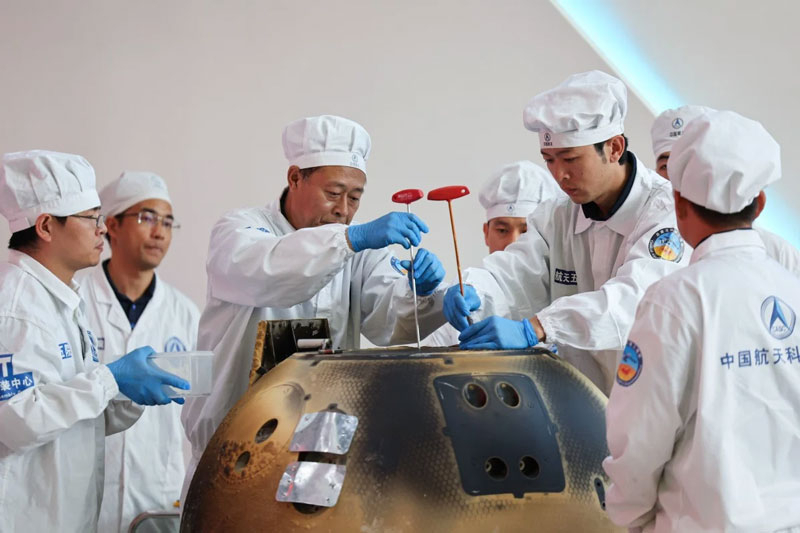Today, for the first time, preliminary information appeared about the composition of the soil from the far side of the Moon, delivered to Earth by the Chinese Chang’e-6 probe. The probe brought to Earth about 2 kg of unique samples from that side of the Moon that is never visible from our planet. Full-fledged scientific articles on soil analysis will appear in a year or later, but Chinese scientists did not draw intrigue and shared preliminary data that surprised.

Image source: Xinhua
The soil on the far side of the Moon turned out to be looser or less dense than all previously delivered soil samples from the visible side of the satellite. This makes it very different from everything that space missions have brought to Earth since 1969. This alone is worthy of attention. But that’s not all. Before the advent of unique samples, all samples from the Moon mainly contained basalt rocks. In the soil samples from the reverse side, in addition to basalts, there are many “foreign” substances that, in a geological sense, look quite fresh.
Scientists suggest that they got their hands on a mixture of more “mature” lunar soil and materials that were relatively recently knocked onto the surface of the Moon. Several fresh impact craters were noted in the landing area, which appear to have contaminated the surface at the sampling site with ejecta products, including those that sustained thermal shock. In particular, this was reflected in the glass and feldspar particles in the samples.
The Chang’e-6 probe landed and collected samples from the far side of the Moon at the end of June 2024 in a place called the South Pole-Aitken basin. This itself is a huge impact crater, providing access to the interior of the ancient Moon and allowing us to refine models of the formation and evolution of the satellite. Judging by the first impressions of surface samples from this place, we have never known such a Moon.